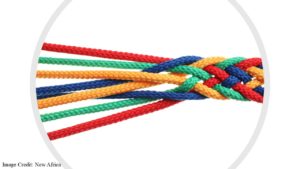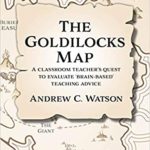The invaluable Peps Mccrea recently wrote about a vexing problem in education: the “noisy relationship between teaching and learning.”
In other words: I can’t really discern EXACTLY what parts of my teaching helped my students learn.
Was it my content knowledge?
The quality of my rapport with them?
The retrieval practice I require?
The fact that they slept and ate well in the days before class?
Some combination of all these variables?
Because I don’t know EXACTLY which teaching variable helped (or hurt) learning, I struggle to focus on the good stuff and eliminate the bad stuff.
I thought about Mccrea’s wisdom when I read a recent study about interleaving.
Here’s the story…
Interleaving 101
Frequent blog readers know all about interleaving, a way of organizing students’ practice.
Let’s say I teach my students about parts of speech.
Once they have a basic understanding of each one, I could have them practice each part of speech on its own.
That is: they identify nouns on Monday, adverbs on Tuesday, prepositions on Wednesday, and so forth.
Researchers call that structure “blocking” — as in “blocks of homework focusing on individual topics.”
Or, I could have my students jumble several topics together every night.
That is: Monday night they practice nouns, adverbs, and prepositions. Tuesday they practice verbs, prepositions, and conjunctions. Wednesday: nouns, verbs, and adjectives.
The total number of practice problems would remain the same, but they’d practice several parts of speech all together.
Researchers call this system “interleaving” — as in “weaving together several different topics.”
Measuring Success
Of course, teachers want to know: does interleaving work? Do students who interleave their practice learn more than students who block?
Let’s imagine two ways of answering that question
Strategy #1: ask the students.
Obviously.
Who knows more about the students’ learning than the students themselves?
Strategy #2: measure their learning.
Obviously.
If students who block consistently remember more than students who interleave (or vice versa), then we have a winner.
So, what’s the answer?
Answers, and Vexing Questions
According to Samini and Pan’s 2021 study, strategy #1 yields a clear answer: students say that interleaving is harder and results in LESS learning.
Of course, that means they think that blocking is easier and results in MORE learning.
Alas, strategy #2 arrives at a contradictory result.
When we measure students’ actual learning, they remember more after interleaving than blocking.
Samini and Pan’s study gets this result. And, LOTS AND LOTS of research gets to the same result. (See Agarwal and Bain’s book for a great review of the research.)
In other words, this study points to an especially “noisy” part of the relationship between teaching and learning.
Students genuinely think and believe that interleaving interferes with learning.
However, interleaving in fact promotes learning.
How do we handle this quandary?
Tentative Solutions
In my high-school classroom, we do A LOT of retrieval practice.
Almost every day, I fire off questions and ask students to attempt an answer.
Sometimes I call on raised hands; or cold call; or have students write answers in their notebooks (I circle the room to check their responses). They might write on the board; they might consult in pairs.
I’m entirely comfortable using retrieval practice — and so are my students — because on the second day of class I showed them research about retrieval practice.
I told them:
This might feel hard at first.
But, trust me. It feels hard because your brain is working harder. And that means you’re learning more.
It’s like going to the gym. You don’t gain muscle by picking up paper clips. You gain muscle by picking up heavy things. Hard work leads to better fitness.
The same rule applies here. Retrieval practice is harder, so you’ll learn more.
Since that day, I stop every now and then at the end of an RP session and say: ” do you feel how much you’ve learned? Do you see how much retrieval practice is helping?”
In fact (I swear I am not making this up), one of my Sophomores once said: “Thank you Mr. Watson for making us do retrieval practice every day.”
I tell this story because it applies to interleaving as well.
I’ve been interleaving all year, but I haven’t (yet) explained it to my students. I plan to do so this upcoming week (or next).
My hope is: they’ll see why we’ve been bouncing back and forth from topic to topic in ways that might seem random or disorganized.
We’ve been interleaving all along.
I offer this solution as “tentative” because my context might not match yours.
For instance, if you teach younger or older students, they might not respond as mine do.
If you teach students with diagnosed learning differences, interleaving might not benefit them as much.
And so forth.
As always: consider the research findings, consider my experience, and then use your own best judgment to fit them into your classroom practice.
TL;DR
If students’ beliefs contradict research, I myself tell them about the research — graphs and all. And then I ask them to trust me.
Retrieval practice and interleaving really do work. My students know about this research pool. So far, they’re on board.
If you try this strategy, or another one, I hope you’ll let me know about your own experience.
Samani, J., & Pan, S. C. (2021). Interleaved practice enhances memory and problem-solving ability in undergraduate physics. NPJ science of learning, 6(1), 1-11.




